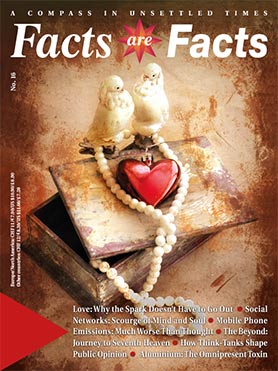How Facebook & Friends are Destroying our Children
Once supposed to be a harmless meeting place for students, Facebook has become an unpredictable parallel world, unleashing people’s basest instincts and causing endless suffering and despair. Read on to find out what ‘social networks’ are doing to our young people.
Once, people became famous if they were a saint – or a devil. A Robin Hood, a Joan of Arc, or conversely a Dracula or Nero. Later, fame could be achieved by great talent: painting and sculpting, for example, like Michelangelo; or composing like Mozart or Beethoven. Then, fame became the ‘reward’ for great beauty – that is to say, being ‘sexy’. Think Mae West, Marilyn Monroe, Cary Grant or Rudolph Valentino. Nowadays, fame has an entirely new face. In contrast to the glory of older versions of fame, the new one is distinguished by tragedy and horror. It is the celebrity acquired by young people when they throw themselves from a bridge, or hang themselves, after suffering months or years of abuse on ‘social networks’.
Long ago, we tarred and feathered the wicked among us for their ill deeds. They were chased through the village and pilloried if they had robbed, cheated, raped or stabbed someone, or set a house on fire. Nowadays, we put people in the stocks if we think they are too fat. Not smart enough, not cool enough, too ugly, because they have a couple of spots on their face. All real cases that led children between the ages of twelve and sixteen to think that their only way out was to commit suicide. In woodland, in the attic, on a motorway, in a cement silo. Between September 29th 2012 and September 10th 2013 alone, nine young people took their own lives, eight of them in Great Britain, one twelve-year-old girl in Florida. They were all users of the social network Ask.fm.
However, they were far from the first victims. According to Austrian state television, 17 young people had already taken their own lives in 2008, after being threatened and insulted online on sites such as Facebook and MySpace. The wave of suicides continues unabated to this day. What is being done to stop it? Nothing.
“Come and collect your scabby knickers and don’t fucking bother coming back to school,” was the last message that Megan Gillan received on Bebo. No one knows whether she read it before she killed herself with an overdose of painkillers. The internet abuse had been going on for months; in July 2009, at the age of 15, Megan saw no other way out but to put an end to her short life.
Holly Grogan was also 15 when, two months after Megan Gillan’s suicide, she threw herself off a bridge near the city of Gloucester in the west of England. Her parents declared that she hadn’t been able to cope with the pressure and bullying she had been faced with in internet networks and ‘friendships groups’ like Facebook, Bebo, and MySpace. A group of girls had taken turns to insult Holly on her Facebook page. The last straw was when they accused her of having slept with the brother of one of their friends (which, as Holly said, wasn’t true), and told her to stay away from a party. That was too much for Holly. As her father said, “You cannot underestimate how important friendships are when you are 15.” That same day, she threw herself off a bridge onto a busy dual carriageway. Holly, who had already had to change schools, had been a cheerful, friendly girl, though admittedly with extremely low self-confidence. Was that what drove her to make up strange stories – for example, that she had had a brother who had died (in reality he was fit as a fiddle), or that her parents wanted to get divorced, neither of which were true? These tall tales had generated a lot of ill-feeling, as her headteacher confirmed. That is, by the way, one of the worst features of these ‘social networks’: they make fibbing and fabrications so easy.
A little girl called Megan Meier from Missouri hit the media in 2007. She passed away at the age of just 13. Megan was the victim of a particularly underhanded form of ‘cyberbullying’: her one-time best friend took revenge on her by inventing a cool 16-year-old boy named ‘Josh’ online. This fake Josh had a big crush on the overweight Megan. Supported by her mother and with intimate knowledge of Megan’s preferences, this former ‘friend’ turned Josh into Megan’s dream boy. She was also aided by a teenage employee of the family, who wrote many of the messages. Before long, Megan had fallen head over heels for her custom-made dream boyfriend.
It’s not hard to imagine that, along with curiosity and a desire for revenge, a certain amount of malicious enjoyment was at play, as the three culprits used such simple means to emotionally manipulate a young girl. Together, the three of them sucked Megan in completely, their ultimate aim being her total humiliation. The beginning of the end was one little message from ‘Josh’: he wanted nothing more to do with her, because he’d heard that she treated her friends badly, that she was a bad person. “What are you talking about?” she is said to have messaged back. Soon afterwards, ‘Josh’ had made it so abundantly clear – with a series of insults, humiliating remarks, and accusations – that Megan could see only one way to escape this emotional catastrophe: she hanged herself in the attic of her parents’ house, in October 2006.






